Today I joined Blair Enns as a guest for a Win Without Pitching webcast on the future of content marketing. I spoke for a little over half an hour, which I’ve transcribed below and made nice for reading. (Long reading, I should say. This beast is almost 6,000 words, which should take you about 25 minutes to read. Pour some coffee. Find a nice chair.) Afterward, Blair and I chatted and took questions for a bit, which is not included below. I did include some thoughts on that portion at the end of the transcription…

Thanks, Blair, and hello, everyone!
Content. I would love to conduct some sort of scientific study of psychological responses to that word. I’m imagining a scene in which we’re all hooked up to different stress testing equipment by electrodes and with each exposure to the word, the meter readings are just going off the charts. Content. Some of us break out into a cold sweat; fear registers. Content. Others are overtaken by confusion. Content. Mass-frustration. The spectrum of responses is wide and diverse, but none of us are exactly having an easy time of it.
Such a scene borders on the absurd, but the basic idea is rather true to life, isn’t it? Whether we’re skeptical of the value and effectiveness of content marketing or true believers is irrelevant to the degree of stress we’re under by participating in it. The bottom line: it’s hard work when it’s working, and it’s hard work when it’s not. The question is, will ever get any easier, or will it get even harder? In its current form, is content marketing sustainable for much longer? And is there anything we can do about that?
I’d like to explore these questions with you today, and hopefully, provide a few answers. None of them will be simple yeses or nos. Instead, the question of sustainability will lead us to explore some of the ways that content marketing will change — in the short term and long term — and hopefully equip us to think proactively about how we work in this space. First, we’ll look critically at how we’re doing content marketing now and why we’re doing it that way. Then, we’ll look at how a few trends observable today hint at what’s coming soon — just around the corner, really. And finally, we’ll speculate at what might be in our more distant future as far as content marketing is concerned.
So we’ve got three sections:
- What’s happening NOW
- What will start happening SOON
- What I think might be likely to happen in the more DISTANT future.
In each section, I’ll highlight the main driving forces as well as the opportunities that they present to us.
NOW
I know that you already know what content marketing is. But have you ever thought about the substance of most definitions of content marketing? Most of them are structured in terms of immediate means and ends. Take the definition that we use most often at my firm — that content marketing is how you attract, inform, and engage your prospects. It’s pretty straightforward. It’s the words that attract searchers, the substance of those words that informs them, and the relevance of those words that engages them. At the end of that sequence, the idea is that they are primed for sale. But let’s generalize for a moment so that we can decouple our fundamental purpose in doing any of this from the way we’re doing it now. After all, most definitions focus on the specific means so much that the ends get a bit murky. So for just a moment, let’s flip that and focus on the ends a bit more and let the means be murky. I think that might sound a bit more like this:
Content marketing is simply today’s system by which we make our expertise known to those who need it. The more specific, the better. Your very unique customer is out there.
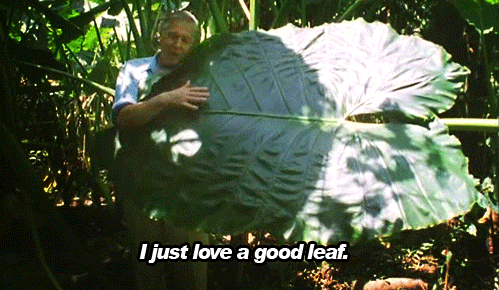
The system is the fluctuating part. It consists of the specific surrogate forms our expertise can temporarily take — mostly articles and presentations like this one — the structures that contain those forms — websites, mostly — and the technology and methodology we use to watch, analyze, and organize the people who engage with what we create. This system — the means — and its formats, structures, and tools are changing all the time. So, naturally, we’ll talk about some of that today. But the ends — that we need a way of articulating our expertise — won’t change. We will always need that. We used to employ a system called advertising for this. Much of that energy — especially in the B2B and professional services space — has shifted now to content marketing. I expect it will shift again and we will one day look at content marketing with the same confoundment with which we view the dumb, one-way, impression-based ad system that reigned supreme for quite some time. Meanwhile, I’d say today’s system — what we call content marketing — is actually the product of a particularly labor-intensive transitional period.
Here’s how that works:
You write something about what you do and publish it on your website. Someone researching that thing finds it with a search engine. They read your thing and after they finish, they decide that they’re interested in what you have to say. They tell you who they are so that you can send them more stuff about what you do. They’re on your list now, and you send them stuff. They learn more about you and you learn more about them. At some point, they’ve narrowed down their list of options and start evaluating how you compare to a few others. You’ve got content for that, which they read. You see that they’re reading that stuff and so you start paying closer attention to them. You might even reach out to them now that you know they’re worth your time. You have a nice conversation. You know what they need and what questions they’re asking. They’re impressed. You don’t pressure them; you don’t need to. You keep watching, and shortly thereafter, they call. They’re ready to buy.
When put like that, it sounds pretty great doesn’t it? And when it works, it is!
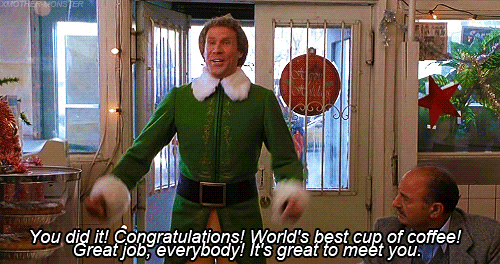
Of course, I reduced the hardest and most laborious parts down to three misleadingly simple words. “You write something.” Sounds easy. Turns out, it’s not. More on that shortly. How about “you keep watching”? Sounds straightforward, but actually, it’s pretty complicated. Content creation and lead management are extraordinarily complex and difficult things to do, to do well, and to do consistently. But if today’s system is working for you — as it is for many that have been in the game long enough — lead management is the big opportunity. If the content you create is successfully attracting, informing, and engaging prospects, then you’re going to have more information coming at you than you know how to manage. My firm has been doing content marketing for long enough now that this is the opportunity we’re focusing most of our time on, and why if you go to our site today, you’ll see a ton of information about marketing automation. Marketing automation is a system that picks up where content marketing leaves off. It helps us do the “watching” and “reaching out” that I mentioned earlier. Instead of nurturing every lead, it helps us focus our energy on nurturing only those that are likely to buy.
That’s the system as it stands now. In this system we’ve got the following opportunities:
- Narrowing our positioning
- Writing content that articulates our expertise and frames it for prospects where they are in the buying cycle
- Measuring content engagement closely
- Automating lead development and nurturing
- Using retargeting technology to redirect attention from other, related venues (I won’t go in to this, but retargeting — which is the technology that makes it possible to show targeted display ads to web users based upon their search and browsing history — is just an extension of the logic of this system).
From within this system, it’s natural that we’d forecast a future that looks much like the present.
Just recently, I found myself laughing while reading a KissMetrics article called The Future of Content Marketing Revealed. (Who wouldn’t click on that title?) Well, as I discovered midway through the piece, that future is essentially just… more content! They didn’t have anything to say about a future that might be meaningfully different from today, other than in terms of volume. But who wants that future? We’re already struggling with today’s volume. If the future is more, than that’s a future worth preventing. But I can understand why “more” was the prediction that they settled upon. Today’s system is built upon a search based information economy in which indexable, text-based, webpage content is the currency. And like any economy that buckles under its own pace, inflation is expected. Can’t keep up? Print more money. Of course, what happens when you increase volume? Value drops. More dollars in the system means that things cost more dollars, not that you can actually buy more. With content, it’s exactly the same. We’re already struggling to keep up with the information economy. We think that if we produce more, we’ll catch up. But what we’re really doing is ensuring that what we do create is worth less.
I wouldn’t think it too harsh to call this whole thing a house of cards. But before I forecast a different future, let me explain why I think the present is bankrupt:
First, let’s start with text.
This entire system is built upon text. There’s a reason for this. We’ve been bound to text because — thanks to search engines like Google — we delegated research to robots who are not very good at understanding much else. To be fair, that’s worked out quite well for us for over a decade now. (Keep in mind that Google didn’t even launch until 1998. Before that, search engines were dumb text-match boxes that queried against lists put together by people.) Since then, the internet has been a playground for writers. Anyone can write; anyone can find good writing. Business caught on to this, and presto: Content marketing. As long as there are text-based search engines, and as long as there are good writers, writing will remain a brilliant means of describing your expertise. And as long as there are readers, they will continue to make time for good writing. So everything’s cool, right?

Well, let’s look at “good” for a moment.
My friend Phil Johnson, who runs PJA Advertising in Boston, recently wrote an op-ed for Forbes about what he calls the “pyramid scheme” of content marketing. He had this to say:
“What all these programs share in common is the conviction that everyone is equally capable of creating attention-grabbing content. That’s the trap that marketers need to avoid. Another misleading enticement for people is the low barrier to entry. Social platforms, an abundance of publishing tools, and the ability to share almost anything with anybody makes it easy to get into the content business. If you were to believe the hype, everybody is now their own little media company and content producer. The problem is that we’re not all suited to become media companies, and very few of us can produce content that anybody wants to view. While a few companies have the talent and resources to produce and distribute really great content, most content never sees the light of day…This notion that we can all churn out hit videos and blog posts is as ludicrous as saying that we should all be writing novels.”
I think he’s absolutely right. The system certainly has its own internal logic, but its greatest flaw is that, like capitalism, it not only gets by, but grows on volume, not value. Now, I fundamentally believe that no content is worthwhile unless it’s good — unless it’s worth your time to read and actually offers some value to you. That might be entertainment, or it might be education. But if it’s neither, then it’s worthless. As long as the system’s wiring is in sequence with text-based search engines — which, remember, are really just engines of the big, dumb, display and impression-based advertising system that we internet folks want to believe is dead and gone — content doesn’t have to be good to work. It just has to have some words in it.

Once you understand that, you get to have a bit of a Neo-sees-the-Matrix moment. You get to see this system for what it really is. And I get to mix my science-fictional metaphors. See, content marketing is like the Borg. It’s spreading by machine, faster than we can control, and it’s sucking up people left and right and spitting them back out as drones with pretty limited protocols: write a bunch of text, frame it for robots even dumber than you, then post it to every social outpost you can imagine and repeat and repeat and repeat, and then hope for some tiny fraction of your available network to respond in some way, either by giving your text a second of their time or by helping you spread it. Next time you hear someone say that something went viral, or that they’re hoping for something to go viral, think about it in this way, because what I’ve described certainly sounds like the spread of a virus to me. This is how I’d describe the present state of content marketing. Yes, there’s great stuff out there. But it’s far outnumbered by stuff that is really no better than the common cold.
And consider this, as well: When a system rewards rapid spread and high volume, it encourages cheating. We see this in our financial system, and we see this in our content marketing system. Instead of things like derivatives and short sales, we’ve got content farming, plagiarism and content theft. In systems like these, where humans struggle to keep up with what is fundamentally inhuman, it’s natural to look for short cuts. Especially when many of us never set out to be writers in the first place and have found ourselves spending more time developing this new expertise so that we can market whatever our original expertise was. You see, this is only partly a technological problem. It’s also a people problem.

So, to prevent me from spending all of my time in a rant (believe me, I could do it!), let me sum up what makes content marketing — in its current form — unsustainable:
- It requires text, and prefers it in high volume
- It requires that non-writers become writers
- It requires more time than anyone really has. This is the classic freelancer’s problem: more time prospecting than billing
- It requires more attention than anyone really has. This system produces more content than we can meaningfully engage with, and without better filters, we can’t continue to expect an eager audience.
- It has made us all impatient. The more we feel we must attend to, the less time we feel we have to give to any individual thing. Nick Bolton wrote a good piece on etiquette redefined in the digital age for the New York Times that sums this up nicely.
I know, it’s all very discouraging, isn’t it? But I think some of this is just on the cusp of changing for the better. So let’s shift our focus to what’s coming soon.
SOON
The first bit of shift I see coming is in formats. This will be a thread I’ll pick up on in the DISTANT future section, but for now, we are going to see some movement. Specifically, I think we’ll see a bit of expansion into even more audio and video, as well as a greater emphasis on closed, transactional content.
Let me first explain the audio and video content. As I already mentioned, we’ve got a system built upon text. To get the SEO benefit of your content, it has to be text. But our engines are getting a bit more sophisticated, and fortunately, so are we. We now have a greater ability to create metadata for media like audio and video — which makes it far more friendly to search engines — and meanwhile, we are all getting up to speed on what “metadata” actually means! Win/win. But, more importantly, we’re seeing a greater demand for a diversity of content experiences. Someone who doesn’t have the time to read your 2,000 word article might have the time to listen to your 20 min podcast or watch your 5 min video. So spreading your content across platforms is going to be more critical. I know that sounds like more, but the idea is diversity and spread, not necessarily volume. If you write a 2,000 word piece, could you turn that same piece into a video or podcast? Also, consider diversity in terms of the people creating content. If you’re managing a team of creators, a greater spread of formats means you can leverage their talents in a much more sensitive way. Maybe someone who isn’t much of a writer would be a natural in front of the camera. This reduces pressure on the writing requirement that might not be a great fit for everyone trying to share their expertise. One person doesn’t have to feel like he needs to be three. Given the critique I covered in the first section, we’re still not exactly where we want to be on this, but we’re getting closer.

Second, closed transactional content: What I have in mind here are things like e-books and webinars. Many of them are searchable within their own marketplaces — to varying extents — but with the right metadata, they are discoverable via search, which is the main point. The reason we’ll see a trending emphasis in this direction is because a piece of content that is downloadable is transactional — you give it to them, they tell you something about themselves. Within marketing automation systems, this transaction is the foundation of lead scoring and nurturing programs. Content transactions are easier to measure than page views, they’re easier to value, and they’re easier to require when the content itself is not within a page, but a portable asset. With all of that — not to mention the greater ability to monetize the content itself within other platforms — I think we’re going to see a rise in emphasis on this transactional format.
The next trend has to do with automation. I briefly touched on marketing automation, which is very much of the NOW, but what I’d like to explore is automation as a filter. I mentioned earlier that without effective filters, we can’t continue to expect a willing and enthusiastic audience. Well, I think those filters are coming but they’re not going to look like the filters we once expected to help us through this — things like RSS readers and Twitter lists. Instead, there are going to be two kinds of filters. First, filters that we as individuals use, and second, filters that companies can use to better reach the consumer. Of course, I didn’t say they’re going to necessarily play nice with one another. More on that in a moment…
First, on our filters. The question I keep asking myself is, why can’t I just consolidate all my social media? All my stuff — my Twitter, Facebook, LinkedIn, Google+, etc. etc. — into one page? FriendFeed, which was started by some Google alumni, tried to offer that kind of magic years ago by pulling RSS feeds from different social networks into one interface. I used it, a little. Then, in 2009, they were bought by Facebook. Why do you suppose Facebook would want a tool like that? Mainly, to make it go away, though I’m sure there was human capital to be gained from those smart developers. Enough to be worth $15 million plus double that in stock.

See, social companies want to be that main place where you put all of your attention. They don’t want to share it. They keep very tight control over their feeds and APIs for this reason, which is why building apps and other functionality that depends upon social integration has been pretty volatile.
Unfortunately for the social companies, I think we’re at a bit of a stalemate, and surely they realize this too. Google, Facebook and Twitter — but mostly the first two — are going to eventually have to stop trying to own all social and accept that they’re going to have all of some users attention, and probably some of everyone’s, but not all of everyone’s. Once they reach this conclusion, that piece of the attention pie will ultimately be on the users’ terms, at least insofar as interfaces are concerned. I think that’s going to mean broader API use and better consolidation and filtering of content. By that point, there’s going to be pretty serious pressure, especially if KissMetrics is right about the future of content marketing in the short term. Without the right filter, enough users will bail to make it worth the social media companies’ while to play nice. For them, there are real advertising dollars at stake. Better to lower their max than to lose everything. Facebook is indicating it gets the message. They just announced embeddable posts last week. In the meantime, keep your eye on services like RebelMouse — which aggregates some social media into one dashboard for community manager types — and pay close attention to which features come and go at the whim of social API terms of service.

Of course, the social kingdoms aren’t going to give up that easily. They’ve got a few other tricks up their sleeve, especially for those dedicated users that do spend most of their time within their walls. Take RSS as an example — they’d like to kill that off completely, and Google’s giving it their best shot right now. They want to be where you experience content and share it with others. RSS makes it possible for you to have that experience anywhere. I also get the sense that they’d like to kill of email. Think about it: Facebook would be more than happy for you to remain within their walls and do all your messaging there. Google would love it if you forgot that what you were doing was email, and thought of it as just messaging within Google+. Even now, their ongoing interface tweaks — which presort and categorize your messages so you will think of them less as discrete packets of correspondence from one outpost to another but as a steady stream of conversation — is to that end. That you think of mailboxes less and a social environment more. This abstraction, plus retargeting, will create a filter for content marketers.
Retargeting lets you match users with advertising based upon their search and browsing history. All that data is stored in cookies placed on their machines by a relatively small number of networks, from whom you can buy access. You choose profile data to match to, they hook you up with eyeballs. Sounds easy, but as far as advertising goes, it’s a sophisticated step forward. Well, imagine that logic married to content marketing. Instead of buying lists of decision makers email addresses and soft-spamming them, you buy into a network that will deliver your content to these greater, abstract social environments. Your content in their Twitter stream, their Facebook feed, their Gmail — wherever they are, you can reach them better. That kind of automation is coming and you will likely pay to do it.
Which means those better consumer filters are going to be working against these better marketer filters. It’s almost like an arms race. (Shudder and scroll down.)
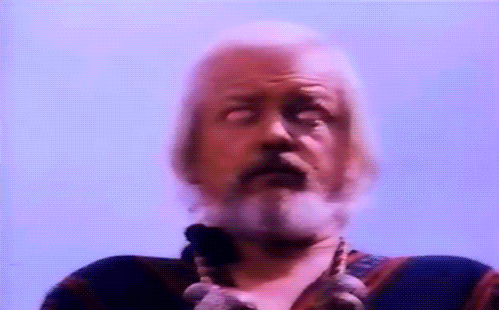
So to sum up the opportunities that are coming soon:
- Creating more diverse forms of content
- Consulting your clients, who are now up to speed on marketing automation, on nurturing programs
- Consolidating your attention
- Leveraging retargeting logic to increase the reach of your content
- For any technologists out there, creating the tools and platforms for better content interpretation and filtration
Now let’s wrap up with a peek at the more distant future.
DISTANT
Here’s where I think we’ll finally see format liberation. There are a few different technologies in development right now that are going to make it possible for us to make our expertise known without necessarily being expert writers. If you’ve used Siri, Google’s voice search, or a Nuance product like Dragon dictation, you already know that speech to text is possible. It’s not quite there yet, at least not in terms of facilitating what I’ve got in mind, but it will be. When it is, we’ll be able to choose whatever format we want — audio, video, or text — and rely upon software to properly interpret our content and make it findable by searchers. That means that if your expertise is contained in a video, search engines will index it, transcribe your speech to text, and make all of it searchable by text, just like a webpage would be.
In parallel with speech-to-text, the technology is already available to find and index text within images and make it searchable. If you use Evernote, you’ve already experienced this. Image recognition in general is getting more sophisticated. Algorithms can identify people, places and objects within images and create metadata to make those things searchable. I imagine these types of capabilities will coalesce into something even more sophisticated, along the lines of ambient analysis, which could potentially analyze audiences by their size, makeup, facial expressions, even the volume and density of their clapping. All of this put together means that you could share a video of a presentation you gave at a conference and it be completely indexable — your speech and slides — with a layer of analytical metadata on top that will tell a searcher whether it’s worth her time. After all, why couldn’t a search engine take all of that data, mix it with what people are saying in other content and social media about the event at which you spoke, and return with some sort of rating — a la Klout — of your talk? And why wouldn’t you be interested in making a video rather than slogging through writing thousands of words?

This is big, big stuff. The bottom line: If hours at a keyboard isn’t your jam, there’s a future for you. That’s great news, right? As for when, I’m thinking this is five or so years out.
But regardless of the format, all this progress is actually going to make the work harder, especially if you progress up the content food chain and are doing big speaking gigs or writing books. To understand that, we need to think of this content system in terms of economics again.
See, right now, book publishing looks a lot like the music industry did pre-Napster. You sign a contract to write a book — which is the primary good for sale — then, with an advance on royalties in your pocket, you go off for months and write the book. It goes through costly editorial, design and production process, and once it’s done, you go on a speaking tour to promote it. Then people buy your book. Once enough have sold to cover your advance, you start earning royalties. For musicians, it was the exact same deal. But think about it: why wouldn’t the publishing industry follow the same trajectory as the music industry? Really, it’s already pretty far along that path. Today, the music, in its playable format, is no longer the primary good for sale. It’s the catalyst — if not loss-leader — for a tour and merchandise, where the real money is made. If you publish a book today with a major publisher, the process I just described is mostly still the same, but the advances are shrinking, if not disappearing. This is because sales are dropping and expectations for sales are dropping. Why? Because there is more competition — more books being published — and more format disruption. Digital expectations are pushing prices down, and when a book — in its digital format — can be copied and sold forever, it’s inherent object value drops. So, ultimately, this economic state — coupled with the ease of self-publishing — will make the book itself purely a gateway to potential event revenue.
That might be ok, especially if you’re quite well known and in demand as a speaker. But…
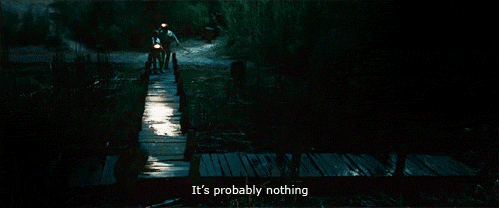
But.
This whole speech-to-text thing is probably going to meet us at the other end of this inversion and disrupt all of that. In the economic inversion model I just described, the object value drops because, in going digital, it makes supply virtually unlimited. Meanwhile, the value of an appearance shoots up because its supply is extremely limited. After all, person can only be in one place at one time, right? Well, if technology delivers on that format liberation promise, then we’ll all be getting busy with uploading videos of our events, which will be so well analyzed and indexed that the availability of these videos post-event will become even more expected than they already are today. Of course, the video and audio quality will go up, and bandwidth for all of our internet service will expand, to the point where — just like many professional sports broadcasts today — the experience of watching a speaker will be better online than in person.
Once these technological and economic factors convene, they will look like spectacular opportunities, but they will rip the guts out of our content economy, just as they have with entertainment and sports. All it’s going to take is one Seth Godin to stop appearing at conferences — because he knows that his fans will be willing to pay for digital access to him, giving him full control over his own appearance value — to suck out the last bit of value that will remain at that point: the reputation boost an event can offer to unknowns. He and other luminaries have done this with books. Once there is economic incentive to do it with events, they will. And the rest of us, of course, will follow. Like we always do. Hopefully we won’t expect to make any money from our content at that point. That is unless we’ve reached Seth Godin status. Fingers crossed!
That’s one possible — and in my opinion, likely — scenario that results from several technological and economic trend lines meeting at just the right time, convenient or inconvenient, depending upon who you are and how you see it. But no matter how exactly this plays out, I can’t see it not shaking our content models down to their foundations. Will we be ready?
Well, I suppose I’ll leave you with that question.
See you in the future!
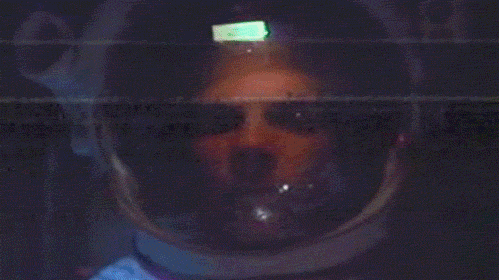
Thoughts on the Q&A
I knew I should’ve taken notes during the Q&A! 😉
A few stray thoughts:
- One of the first things out of Blair’s mouth was to remark that he was “disturbed by many of the things” he had heard. Exactly what I was going for! In all seriousness, though, what I was hoping to convey is that the economics of this system — and the economics of our culture at large — are not necessarily making for a comfortable future as far as some of the things we currently feel burdened by in content marketing are concerned. To put it more bluntly, what I think that means is that there is a limit to the growth and value we can extract from this system, and that this limit is at least somewhat in sight. But at that limit isn’t an end per se, but just a stop to the sort of growth we’ve experience thus far. So, consider it “peak content,” if you will, but not necessarily the end of content. There’s a big difference there, and I certainly wouldn’t want anyone to walk away with the message that I’m saying the ship is sinking and we should all just jump now. To the contrary, between now and “peak,” there are plenty of opportunities and ground to cover.
- Blair and I briefly touched on email while chatting before the broadcast and had intended to return to that subject a bit more in the Q&A, but I think we got caught up in some of the larger themes such that we ran out of time to get back to this detail. In the “Soon” section, I talked a bit about how the big players in social are interested in controlling the flow of information (vis a vis RSS, APIs, email, and the like) and not in making it an open ecosystem. Within that broad point, there are a variety of threads already binding themselves together, one of which is the abstraction of email. If you are a Gmail user, you’re already seeing this — your inbox is being divided into categorical buckets into which Google is pre filtering your messages. What this means is that they are learning what is promotional and what is not, what you consider important and what you do not, etc. and because they’d prefer to pre-sort these messages and — as a courtesy to you, of course — keep your main inbox free of noise, they are widening the gap between we who send email for marketing purposes and the attention of those we hope to engage. The design of their email tool is simply making it more likely that pre-sorted emails won’t be seen — either as soon as they would have been, or at all, since once my promotional tab fills up, I’m kind of just inclined to flush it out, rather that go through each message in any detail. Unfortunately, this is a strategic move by them to abstract email — from discrete messages to more of a flowing conversation — and there’s little we can do about it. Suffice it to say that it is only going to get harder to ensure that recipients read our emails. I’m expecting a reduction in “open” counts. However, Blair mentioned in passing that his last email had received fewer opens than he wanted, so he collated the list of recipients who had not opened the message and re-sent it with a small addendum — basically, “I sent this, perhaps you missed it…” and saw good responses from that tactic.
- Another question was along the lines of whether someone should wait for some of the soon-to-come technological advancements rather than getting going on content marketing now. In short, no, I don’t think so. It takes a long time to find one’s voice, regardless of the format one ultimately decides is best. That means that any head start you can get, regardless of whether writing seems like it will be more of a chore than, say, talking at a webcam, is worth taking advantage of. Not to mention that even if you do find that video or audio is a better fit for you, writing is an abstract discipline that is still a part of that format. Even the best comedians write their material before they deliver it on stage.
